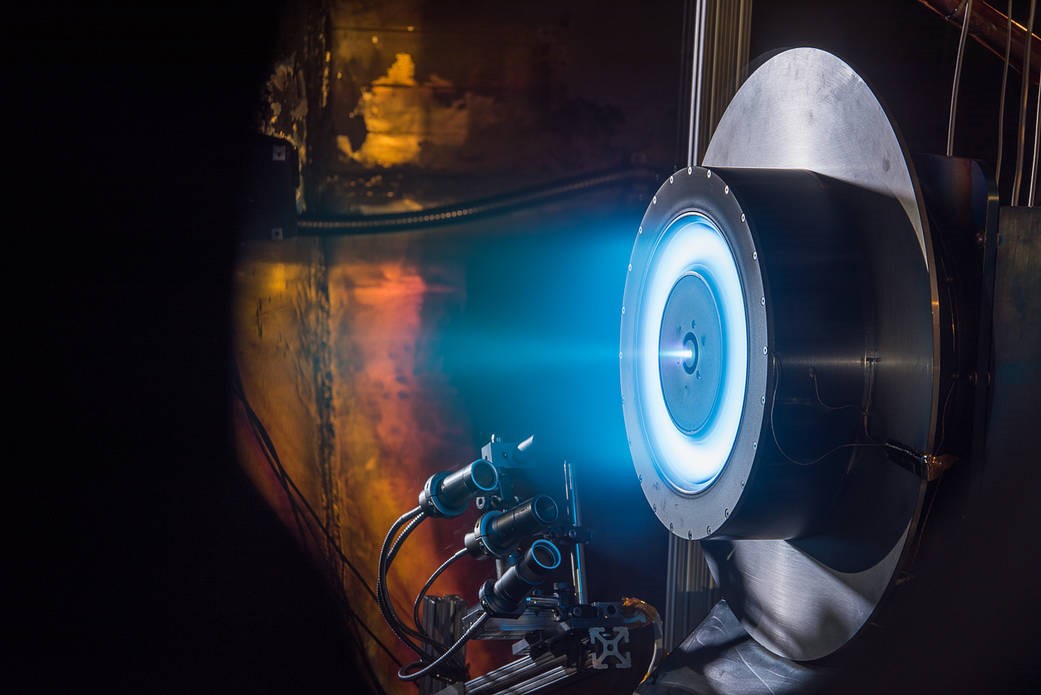
By Brian Santo, contributing writer
NASA said that a new ion-drive spacecraft engine that doubles the thrust of the most powerful previous version has passed its first round of testing.
NASA tested Aerojet Rocketdyne’s new Hall-effect Power Processing Unit (PPU) in combination with a Technology Development Unit thruster and a Xenon Flow Control Unit developed by the agency. The tests were conducted at NASA’s Glenn Research Center.
The previous record holder for Hall-effect engine thrust was Rocketdyne’s own XR-5, a 5-kW engine that has been used on both government and commercial missions.
The latest tests were part of a $65 million contract that NASA awarded Aerojet Rocketdyne in April 2016. Rocketdyne is to help develop, qualify, and deliver five 12.5-kW Hall thruster subsystems, including thrusters, PPUs, and xenon flow controllers, said the company.
The new PPU is described as a “flight-capable” system that can operate for approximately 23,000 hours. That translates to well over two years.
A trip to Mars might take anywhere from 150 to 300 days, depending on a number of factors. So, theoretically, Rocketdyne’s new PPU would be capable of continuous operation during round trips to the red planet and back.
Previously, using Hall-effect thrusters for missions of that length was problematic.
Hall-effect engines use electric fields to trap electrons to ionize a propellant (typically xenon) and accelerate the ions to produce thrust. The process creates a lot of wear and tear on their discharge channels, however — a problem that would increase in seriousness as a mission increases in length.
Researchers at Glenn said that they have developed three techniques to deal with that. “One is a magnetic circuit design that minimizes discharge chamber ion impingement,” said the Center. “Another successful improvement developed by Glenn is a means of replacing eroded discharge channel material via a channel wall replacement mechanism. A third innovation is a propellant distributor that provides both a high degree of flow uniformity and shielding from back-sputtered contamination and other potential contaminants.”
Ion drives are of great interest for a few reasons. They can be as much as 10 times more fuel-efficient than rockets that use chemical propulsion systems, an advantage under any circumstances, but one that becomes more important for longer missions; for example, traveling to Mars.
Furthermore, operators of craft equipped with ion drives expect to be able to harvest solar power to provide power. This is the goal of NASA’s Solar Electric Propulsion project, of which the PPU development is part.
Hall-effect drives are different from the so-called Em drive , which supposedly works (it’s still not clear that it works) by using an electromagnetic field to produce thrust despite the absence of any reaction.
Electronic Products asked Rocketdyne what the next steps are in the development of the PPU; the company did not respond to that question.
Image Source: NASA
Advertisement
Learn more about Electronic Products Magazine





